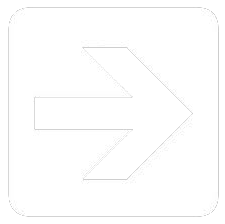|
British Pioneers - the birth of electronic & Digital Switching
The end of the Second World War marked a blessing for Technologists who had given all their time, intellectual capacity and working life to the War Effort.
One of the most outstanding individuals has to have been Tommy Flowers, a researcher at GPO Telecommunications Research Station at Dollis Hill North London, and the
creator of the Colossus the first electronic computer, which, working at Bletchley Park managed to break the German code system that truly helped to shorten the War.
In 1947 Tommy Flowers returned to Telecommunications and started work on signalling and control developments required for subscriber trunk dialling (STD) for the telephone system.
At this stage the telephone system was electromechanical (using Strowger switching) and there was a recognised need for something more reliable and flexible.
A lot of early research was undertaken at Dollis Hill in the 1950's. Early experiments were made using the first transistors which were not reliable,
however pulse code modulation (PCM) was showing that it was a practical form of transmission (see side box on next page).
By the mid 1950's research on switching priorities was diverted to the design and development of ERNIE (Electronic Random Number Indicator Equipment) for the launch of Premium Bonds. This was a major political initiative to encourage National Savings. Following this, work on electronic switching moved forward and a field trial took place using a combination of transistors and valve circuits at the Highgate Wood Exchange in Grand Avenue Muswell Hill London. The scale is interesting, they were using 3000 valves, 26 thousand transistors and 350,000 additional components in what was the worlds first solid state electronic telephone exchange. The first call was made in September 1962 and the system was accepted by the Post Office in December 1962.
|
 |
|
|
|
 |
|
By the end of the 1960's electronic components were getting more reliable and the decision was taken to move to electronic exchanges and by pass advanced mechanical systems like Crossbar. Strowger's time was running out, or so they thought. However, a lot of the early work on electronic switching did not progress as planned and in the end Crossbar had to be adopted as a stop-gap measure. One of the main problems encountered at Highgate Wood was that the solid state components of the time could not handle the analogue signals very well. Solid state switching would have to wait a few more years for digital systems, meanwhile immediate research switched to reed relay based switching with solid state control which you might consider as the half way house between electromechanical and electronic systems. Tommy Flowers did not agree with this and resigned from the Post Office.
A reed relay consists of two small contacts in a glass tube surrounded by an electromagnet coil. When the coil is energised the contacts close. If you imagine one of these at each crosspoint in the diagram above, the control system connects lines 2 and 3 together by energising the coil at crosspoint X.
A field trial was successfully put into service in 1960 as TXE1 at Leighton Buzzard, which operated well and remained in use until 1977. TXE1 was a system for large exchanges (over 2000 lines) and a system was also developed which would be economic for smaller exchanges dubbed TXE2. TXE2 was trialled at Peterborough and Leamington Spa. This was successful and full production was undertaken by Plessey with the first TXE2 exchange in place at Ambergate in 1966
(the Communications Museum Trust has what we believe is the only remaining part of Ambergate TXE2, see photo, and the only preserved (and working) TXE2 is at
The National Telephone Kiosk Collection @ Avoncroft).
The one hundredth TXE2 was installed in 1970 and several hundred were in use by the mid 1970's, serving villages and small towns.
The TXE2 was also the first time electronic switching had been economical for small exchanges and many systems were sucessfully exported abroad by the UK manufacturers.
Following the widespread rollout of TXE2s accross the country for small exchanges and the success of the prototype large reed exchange TXE1 at Leighton Buzzard, planning was in place for the production of TXE3, a refined version of a large reed exchange which could be installed nationwide but it was never to happen. TXE3 was deemed too expensive and a revised design TXE4 succeeded the TXE3 as the production model which was further developed into TXE4A. The first TXE4 was installed in Sutton Coldfield in 1976, some 10 years after the first trial of TXE1. The delays necessitated the use of Crossbar to meet demand for telephone lines at large exchanges throughout the late 60's and early 70's.
By the mid 1980's some 8 million lines of reed electronic exchanges had been installed.
| | Next: Digital |  |
|
